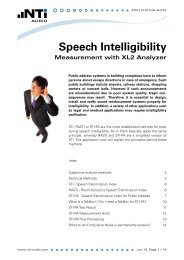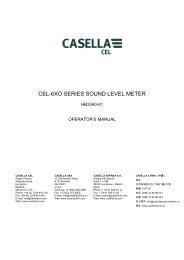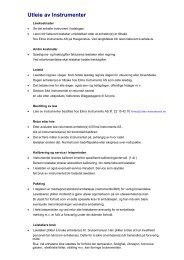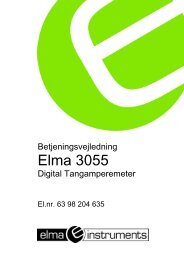HT 2016 - Digital jordmodstandsmĺling. - Elma Instruments
HT 2016 - Digital jordmodstandsmĺling. - Elma Instruments
HT 2016 - Digital jordmodstandsmĺling. - Elma Instruments
You also want an ePaper? Increase the reach of your titles
YUMPU automatically turns print PDFs into web optimized ePapers that Google loves.
Geotest <strong>2016</strong><br />
Version EN 1.01 of 19/10/2000<br />
The measuring method allows to define the specific resistance up to the depth<br />
corresponding approximately to the distance “a” between the rods. If you increase the<br />
distance “a” you can reach deeper ground layers and check the ground homogeneity. After<br />
several ρ measurements, at growing distances “a”, you can trace a profile like the following<br />
ones, according to which the most suitable rod is chosen:<br />
Curve1: as ρ decreases only in depth, it’s possible to use only a rod in depth.<br />
Curve2: as ρ decreases only until the depth A, it’s not useful to increase the depth of the<br />
rod beyond A.<br />
Curve3: even at a superior depth, ρ does not decrease, therefore a ring rod must be used.<br />
APPROXIMATE EVALUATION OF THE CONTRIBUTION OF INTENTIONAL RODS (64-<br />
12 2.4.1)<br />
The resistance of a rod Rd can be calculated with the following formulas (ρ = medium<br />
resistivity of the ground).<br />
a) resistance of a vertical rod<br />
Rd = ρ / L<br />
L= length of the element touching the ground<br />
b) resistance of an horizontal rod<br />
Rd = 2ρ / L<br />
L= length of the element touching the ground<br />
c) resistance of linked elements<br />
The resistance of a complex system with more elements in parallel is always higher<br />
than the resistance which could result from a simple calculation of elements in<br />
EN - 39
















